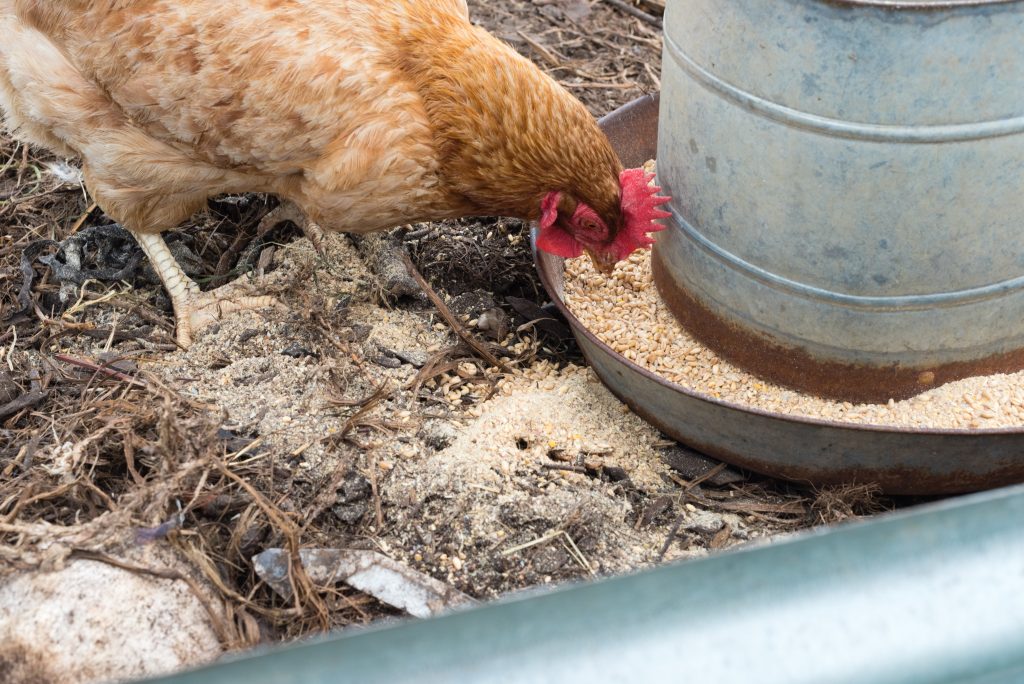Like most birds, chickens love heights. Their natural perching instinct is to sleep on a high perch that’s relatively safe from predators while also giving an eagle eye view of what’s going on in the coop during the day.
Chickens readily use roosting perches installed in coops, but they also love to sit on the top of feeders and waterers. Perching birds often poop. That may not be a problem beneath a roost but manure-fouled drinking water or feed is neither attractive nor safe.

Several inexpensive and simple techniques encourage chickens to perch in places where their droppings won’t cause problems and still keep them off feeders, waterers and other places where poop isn’t desired.
A good strategy is to provide plenty of perches in both the outdoor run and inside the coop. Interior perches, often called roosts, are horizontal poles. They can be made from sections of saplings or 2”X4” lumber. Position so the long side is vertical and the top corners are rounded off with a carpenter’s rasp or plane. Chickens sleep on them at night and perch there during daylight hours.
Locate roosts above places where poop fallout won’t be a problem. Always place them away from feeders or waterers. Chickens aren’t particular about roost height and having a few at different distances from the floor gives birds options. Situate low roosts off set laterally from the higher ones so no droppings from the upper birds will fall onto birds perching beneath them.
Even with plenty of roosts available, chickens will still sit on the top of waterers and feeders and make a mess. This can be prevented by borrowing tips from people who feed wild birds. Anyone who erects a feeder to attract cardinals, chickadees, and many other interesting birds has to foil squirrels. These amazingly athletic mammals can climb or jump past most obstacles, but a few barriers keep them away from expensive seed. These “squirrel baffles” work perfectly to keep chickens off feeders and waterers. They are inexpensive and can be purchased at stores that sell wild bird feeding supplies. Many stores sell both chicken and wild bird equipment making shopping convenient.
A particularly effective squirrel baffle is a rounded plastic dome with a metal hook both above and below it. For its intended use a rope suspended from a tree limb is tied to the hook above the dome with the bird feeder hung from the hook below it. If a squirrel tries to climb down the rope it reaches the dome and slides off.
In the coop, suspend the baffle from the ceiling with a rope or light chain so the dome sits just above the top of the feeder or waterer. If the feeder or waterer are designed to be hung it’s easy to attach them to the hook below the dome. If the feeder is on the floor the lower hook isn’t needed. It is easy to push the dome off to the side to fill the waterer or feeder.
Chickens love to perch on any horizontal surface inside the coop. That might be the top of a nest box or even 2X4s positioned to strengthen the coop walls. The solution is simple. Nail or screw a steeply sloped piece of wood above the horizontal surface so any bird trying to perch there simply slides off. A sloped chunk of plywood works well over nests, while a slanted board keeps birds off horizonal 2X4s.
Squirrel baffles help keep feeders and waterers clean but sometimes the mess that contaminates them comes upward from litter on the floor. It is also a simple problem to prevent. Instead of putting the feeder directly on the litter elevate its base several inches higher on a cinder block. A stack of five or six short pieces of 2”X10” lumber also makes a stable base that keeps the water well above the floor.
With the feeder and waterer positioned above the litter and beneath a squirrel baffle it is hard for chickens to make a mess where cleanliness is important.